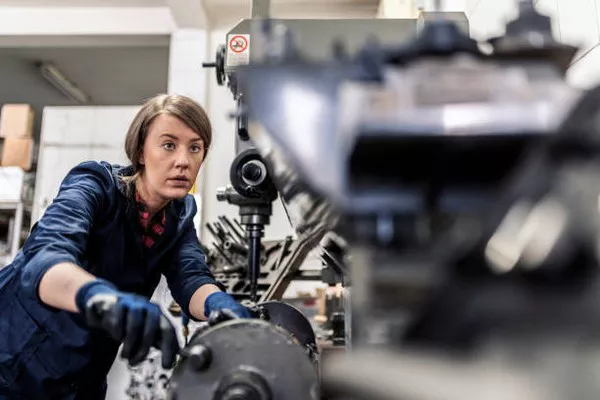Researchers are making strides in scaling up semi-submersible floating platforms for wind farms, particularly in deeper waters far from shore. These platforms, capable of harnessing wind resources in waters unsuitable for conventional fixed-bottom turbines, hold immense potential for expanding offshore wind energy production.
The University of Maine is at the forefront of this innovation, developing a semi-submersible floating platform designed to tap into the East Coast’s vast wind resources. A 13-foot-tall, 1:70-scale model built by the university’s Advanced Structures and Composites Center has demonstrated the feasibility of this technology in wave pool tests. The platform, which is set to expand to over 700 feet with 15 to 20 MW turbines anchored via a mooring system, showcases the potential for generating power from strong winds while maintaining stability.
Floating offshore wind technology, while still emerging, is gaining traction globally, with over 100 GW of projects in various stages of development. In the U.S., floating designs represent a growing segment of the offshore wind market, with the federal government aiming to deploy 15 GW of floating offshore wind technology by 2035.
Unlike conventional fixed-bottom turbines, which are limited to waters shallower than 200 feet, floating offshore wind turbines can be deployed in deeper waters and areas with rough seabed conditions. The University of Maine’s semi-submersible platform, along with other floating turbine designs such as spars and tension leg platforms, offer promising solutions for accessing untapped offshore wind resources.
Challenges remain in scaling up floating wind farms, including dynamic loading conditions, control systems for platform stability, and the management of operation and maintenance costs. However, advancements in research and technology, coupled with real-world demonstrations such as the VolturnUS project in Maine, are paving the way for the commercialization of floating offshore wind systems.
The VolturnUS project, featuring a semi-submersible concrete platform, demonstrates the potential of concrete-based solutions in offshore wind. With its high corrosion resistance and longer design life compared to steel, concrete offers advantages in durability and maintenance. The project’s innovative design features, including rectangular bottom beams for enhanced stability, highlight the potential for concrete platforms to drive the expansion of offshore wind energy production.
As researchers continue to refine floating wind technologies and demonstrate their viability in real-world settings, the future of offshore wind looks increasingly promising, with the potential to significantly contribute to global renewable energy goals.


